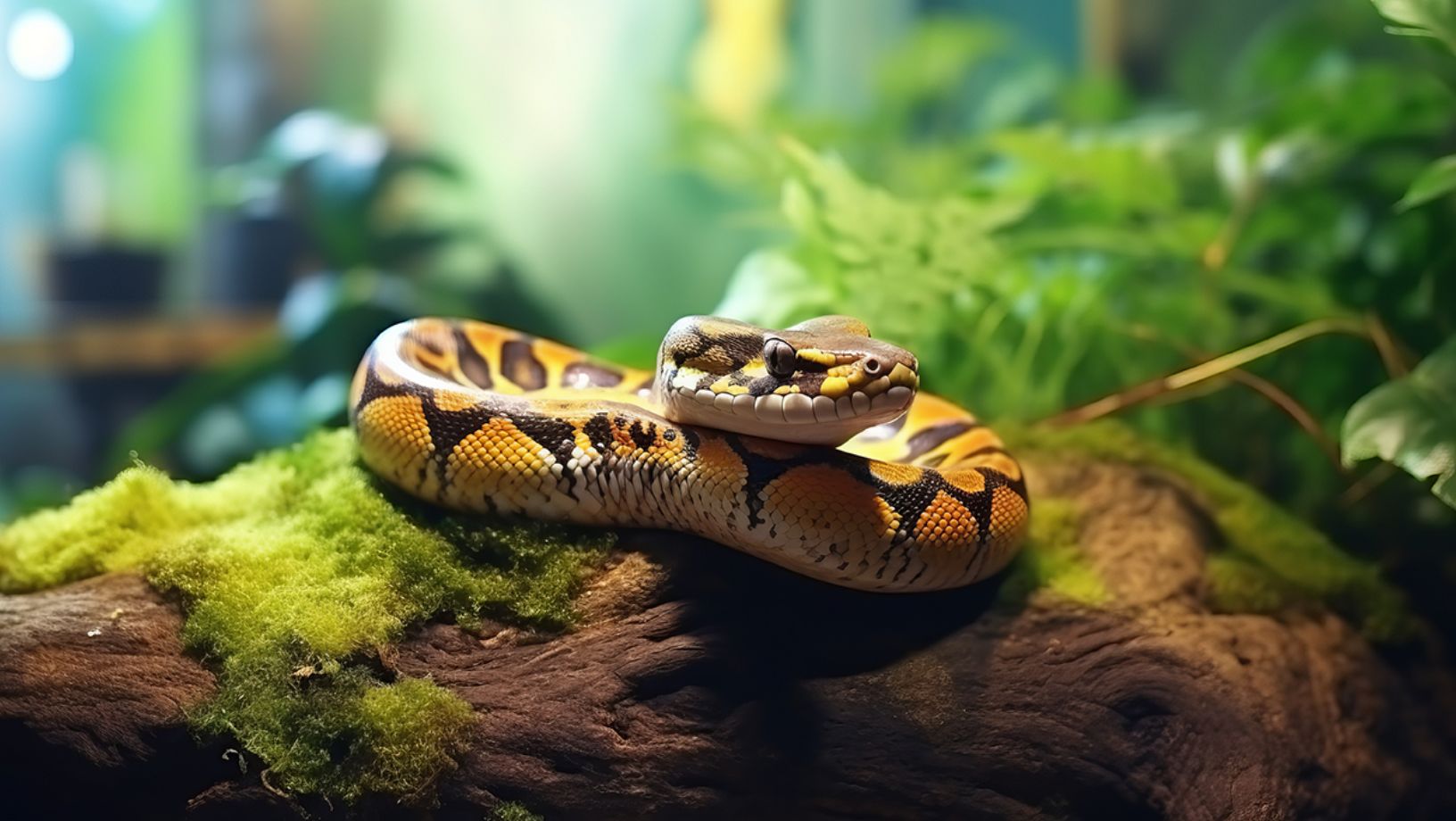Snake Care Guide; How to Take Care of a Pet Snake.

In this Article
5 Cool Facts About Snakes
- There are more than 3000 species of snakes in the world.
- Snakes don’t have eyelids as we do. Instead, they have a clear scale that covers their eyes to protect them.
- Snakes are not able to chew food, so they swallow it whole, and their body breaks the entire meal down over time.
- You’ve probably heard that snakes have special jaws. They can open them extra wide so that they can fit their food in their mouth.
- Snakes can be found on every continent except Antarctica.
How to Take Care of a Snake:
Snakes can make great pets. While some people are too afraid of even the most harmless of snakes to bring one into their home, others know that caring for a pet snake can be so much fun and that they're a great addition to the family. If you’re planning on bringing home a pet snake, then you should follow this snake care guide and learn how to take care of a pet snake the right way as well as what snake supplies to get.
Habitat/Terrarium:
The size snake terrarium you will need depends on the type of snake you have. For example, a ball python is a little bit bigger of a snake and needs a terrarium that is at least 40 gallons (150 liters), if not larger. King snakes, rosy boas, corn snakes and milk snakes, on the other hand, might only need a 20-gallon (75 liters) snake habitat to be happy. The general rule for most snakes is that their habitat should be at least 2/3 the size of their body.
Top the tank with a screened lid for ventilation. Snakes are excellent escape artists, so make sure the lid is very secure—it should include a latch.
Substrate/Bedding
Layer the bottom of the habitat with bedding (also called substrate) that your new pet can burrow into. Aspen & cypress shavings are a natural, odorless reptile substrate that snakes can tunnel through it as they’d do in the wild. Spot clean the bedding often to remove droppings. Stir the substrate at least once a week and change the bedding entirely at least once a month.
Lighting/Heating
Climate control is crucial to the health of your snake, who may suffer digestion problems if the temperature isn’t suitable.
Snakes, like all reptiles, are cold-blooded and need a heating source to regulate their body temperature. Under-tank heating pads are the preferred method of delivering the heat as opposed to overhead habitat bulbs, which can stress the snake. Be sure to warm only one side of the tank to give your snake a choice of microclimates, and keep a thermometer on each side of the habitat to monitor the warm and cool temperature.
Different snakes prefer different temperatures. For example, ball pythons like their daytime temperatures to remain between 80-85°F (27-29°C) on the cool side of their tank and 90°F (32°C) on the warm side. Milk, Corn, and King snakes, on the other hand, like it a litter cooler. The cool side of their tank should stay between 70-75°F (21-24°C) and between 80-85°F (27-29°C) on the warm side. Do your research to figure out what is best for your specific pet.
Humidity
Maintaining the right moisture level helps keep your snake healthy, so a hygrometer, which measures moisture in the air, is a must for your pet’s habitat. Low humidity can make it hard for snakes to slither smoothly out of their skin during shedding time. When necessary, spray your snake’s space with a mister, put in more water dishes, or add moistened moss.
Habitat Décor
If you lived in a glass house, you’d want some privacy too. Place a shelter or cave in the warm and cool sides of the habitat so your snake can get some alone time in either temperature. There are plenty of options of snake habitat décor that your pet will love and appreciate. Stock their tank with branches for hiding and climbing along with a water dish to soak in and add humidity.
Diet:
Snakes are carnivorous, meaning they only eat meat. If you have a squeamish stomach, then they might not necessarily be the right pet for your home. In the wild, snakes love pray that they can hunt and eat whole. Feed your pet snake frozen (then thawed) rodents one night a week. Snakes don’t need to eat very much. Some adults might not feed for several weeks at a time. Learning how to take care of a snake might take some trial and error with their feeding times.
Veterinary Care:
Before you even bring your pet snake home, you should find a veterinarian in your area who is familiar with snakes. Your snake should always have regularly scheduled appointments with their vet to make sure they're in their best health. Your vet will always be a great resource when learning how to take care of a snake. Aside from those visits, call your vet if you notice any of the following signs in your pet:
- Excess hiding
- Eating/drinking less
- Weight loss
- Shedding problems
- Discolored skin
- Discharge from the eyes, nose or mouth
- Labored breathing
- Runny droppings for more than two days
- Decreased frequency of droppings
Information in this article isn’t intended to diagnose, treat or cure your pet and isn’t a substitute for veterinary care provided by a licensed veterinarian. For any medical or health-related advice concerning the care and treatment of your pet, contact your veterinarian.
PET SAFETY TIPS
- ALL ANIMALS can potentially carry viral, bacterial, fungal, and parasitic diseases contagious to humans
- Thoroughly wash your hands with warm, soapy water before and after contact with any pet or its habitat
- Adults should assist children with hand washing after contact with a pet, its habitat or aquarium water







